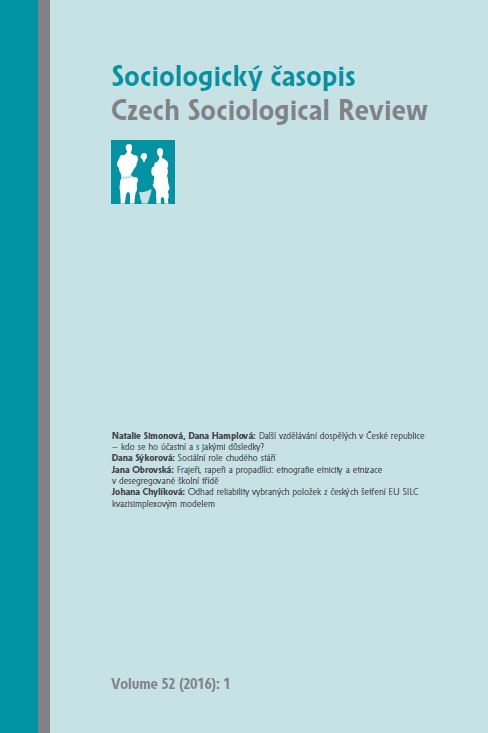Odhad reliability vybraných položek z českých šetření EU SILC kvazisimplexovým modelem
Estimating the Reliability of Selected Items in Czech EU-SILC Data Using the Quasi Simplex Model Method
Author(s): Johana ChylíkováSubject(s): Sociology
Published by: AV ČR - Akademie věd České republiky - Sociologický ústav
Keywords: quantitative data; reliability; structural equation modelling; Quasi simplex model; EU-SILC
Summary/Abstract: The article presents estimates of the reliability of measurement in the Czech surveys carried out in the EU-SILC international longitudinal research project. The reliability estimates were obtained using the Quasi Simplex Model (QSM), which has never before been used in Czech research. An analysis was carried out on all the items in the EU-SILC questionnaire that fulfilled the criteria for the QSM analysis: PH010, the item that asks respondents about their subjective health, HS120, the item that asks about the household’s financial situation, and HS130, which asks what the minimum sufficient income of a household is. The analysis drew on all available data from Czech EU-SILC surveys, that is, data from five rotating panel surveys carried out between 2005 and 2012. The QSM analysis showed that for the selected items EU-SILC data are highly reliable; the estimated reliability of each item was around 0.8, for HS130 it was even above 0.9. The steadiness of the results was confirmed by the high consistency of the reliability estimates across all the panels. A small difference was observed between the reliability of data collected using the PAPI mode and data collected using CAPI. Given the attributes of the QSM model, however, it was impossible to test statistically whether the reliability of PAPI and CAPI data differ significantly.
Journal: Sociologický časopis / Czech Sociological Review
- Issue Year: 52/2016
- Issue No: 01
- Page Range: 79-106
- Page Count: 28
- Language: Czech

